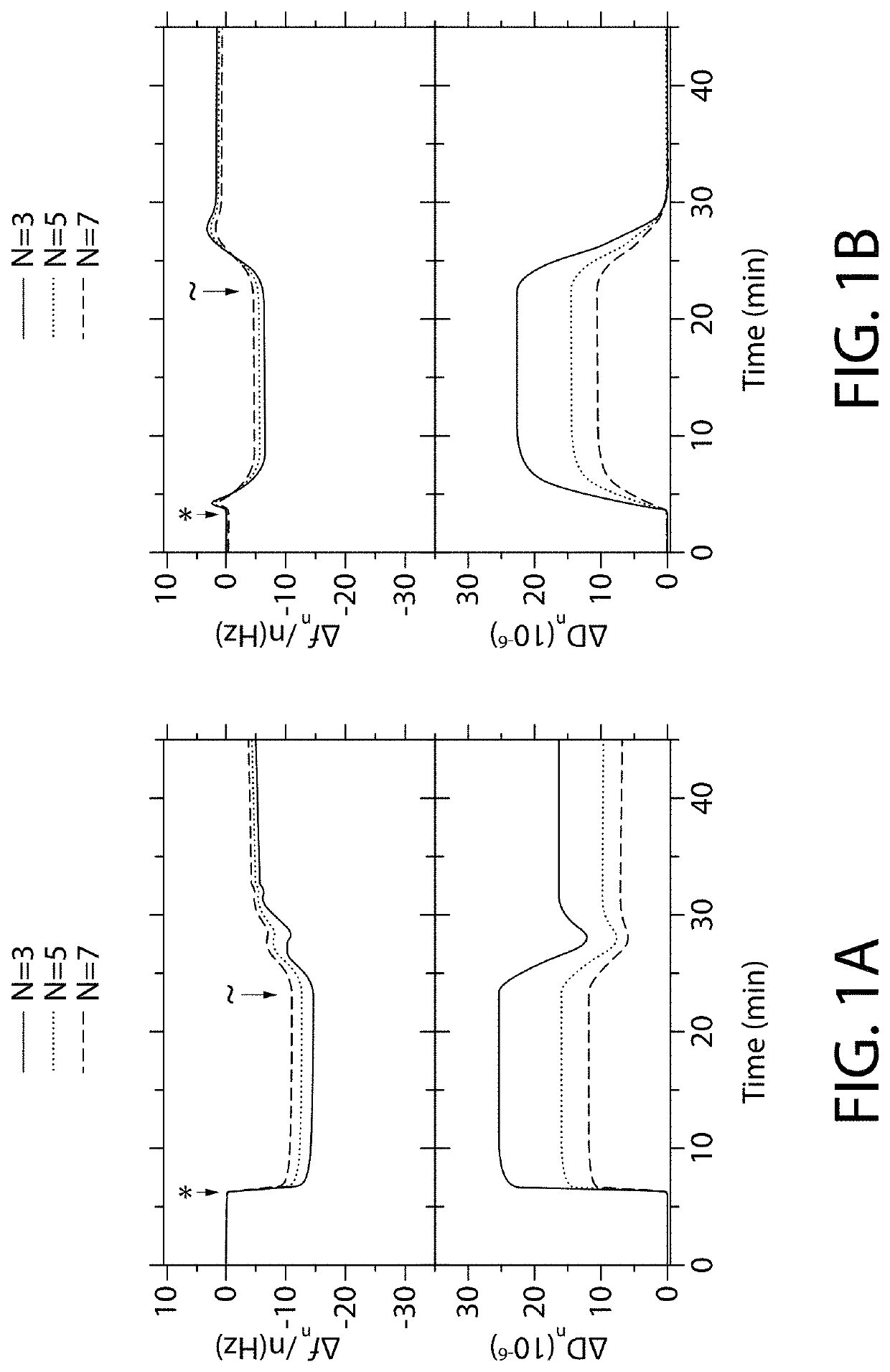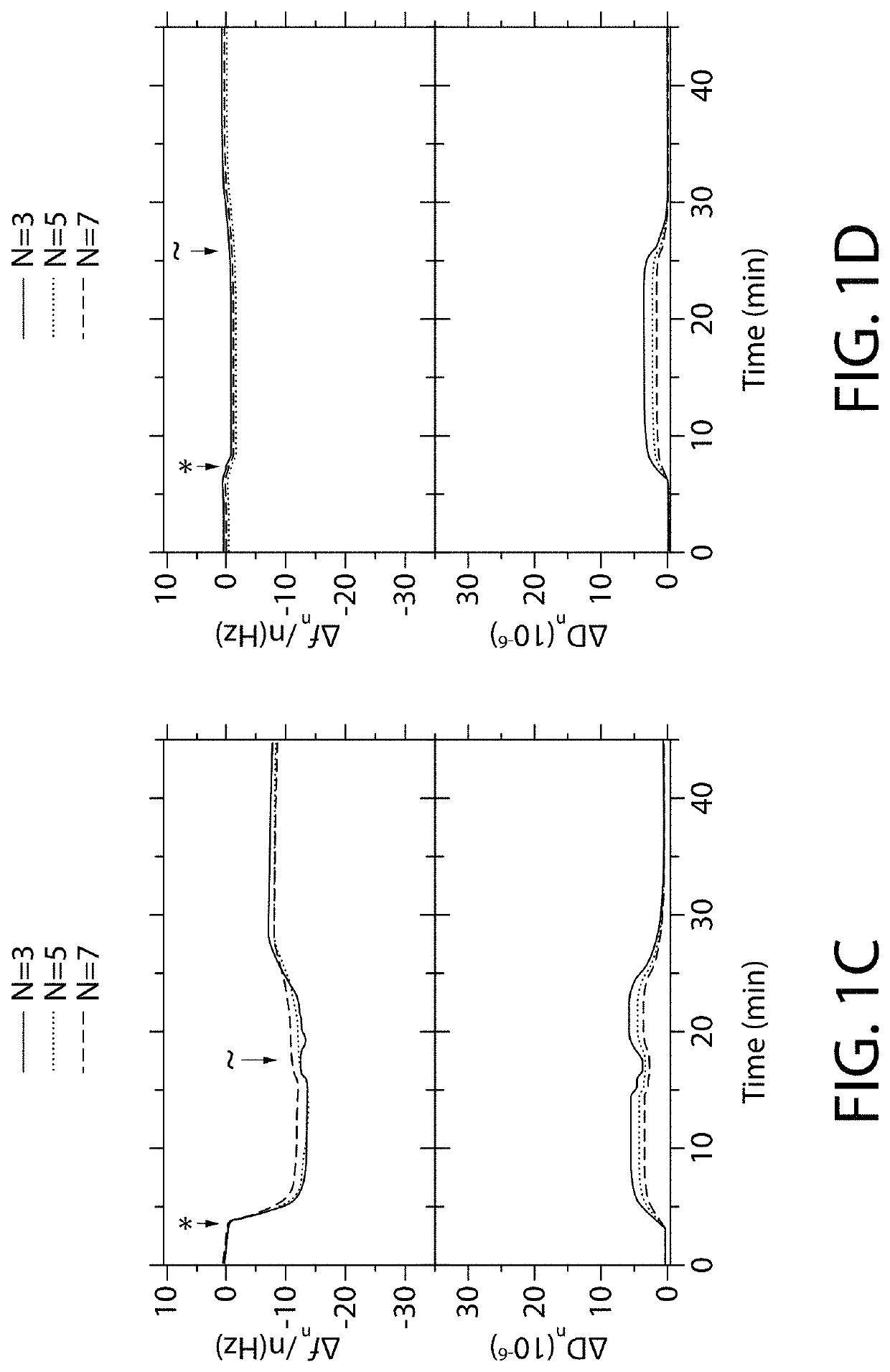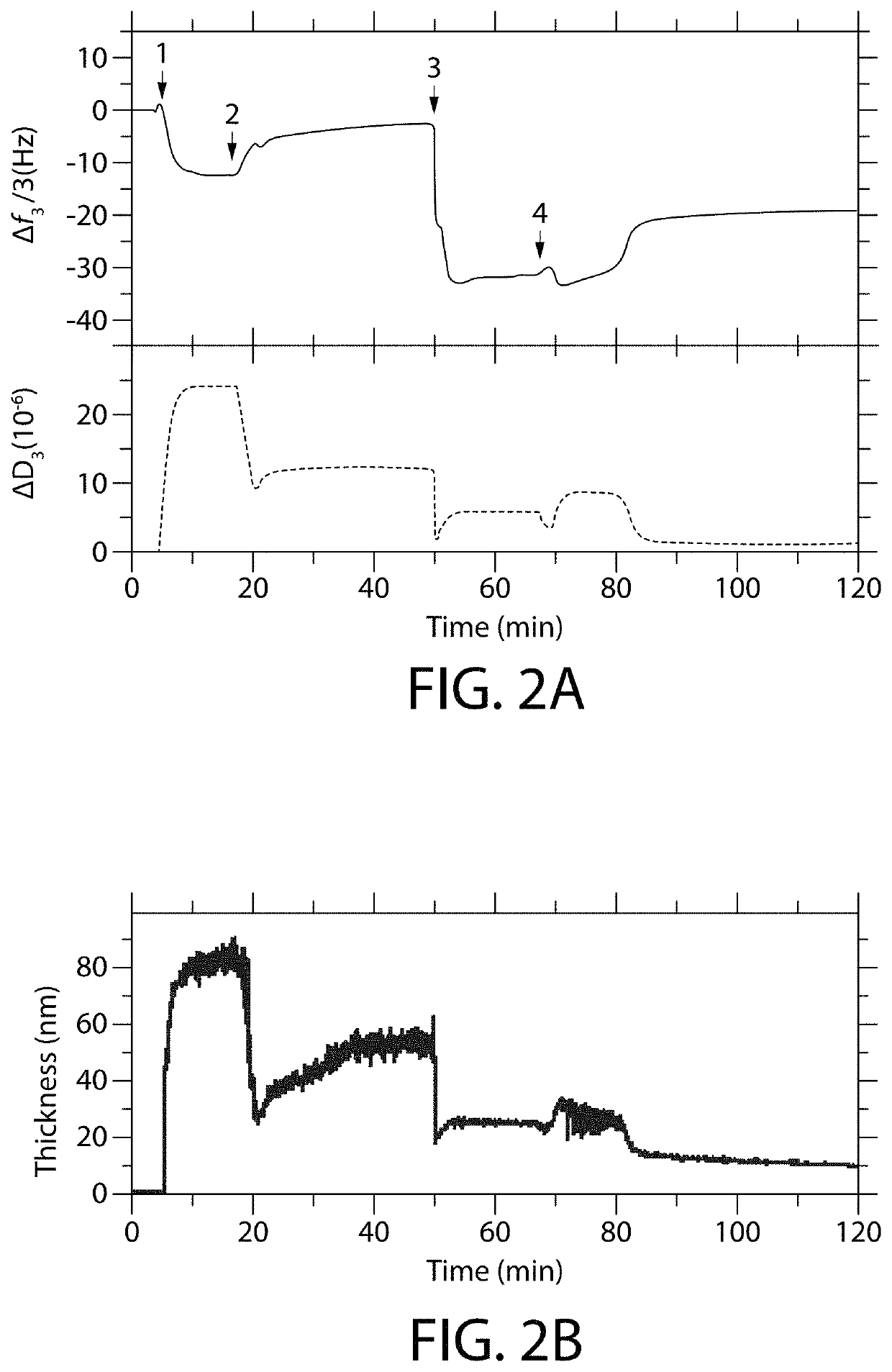Oral care compositions and methods for anti-attachment polymers and coatings
a polymer and anti-attachment technology, applied in the field of oral care compositions and methods for anti-attachment polymers and coatings, can solve the problem that the effect of prophylactic approaches is only short-term
- Summary
- Abstract
- Description
- Claims
- Application Information
AI Technical Summary
Benefits of technology
Problems solved by technology
Method used
Image
Examples
example 1
[0075]The physisorption of an anionic polymer and a cationic polymer onto a surface was evaluated via quartz-crystal microbalance with dissipation (QCM-D). Particularly, the physisorption of GANTREZ® (i.e., the anionic polymer) and poly(allylamine-coallylguanidium (PAA-G75) (i.e., the cationic polymer) onto a hydroxyapatite (HA) surface was evaluated via QCM-D. To evaluate the physisorption of the anionic and cationic polymers, QCM-D sensor crystals that mimicked enamel (commercially available from Biolin Scientific, Inc., of Linthicum Heights, Md.) were utilized. The QCM-D sensor crystals were piezoelectric quartz crystal slides (14 mm diameter; 0.3 mm thickness) coated with 10 nm of nanocrystalline hydroxyl apatite (Ca10(PO4)6(OH)2 and 50 nm of silicon dioxide (SiO2). A SiO2 coated QCM sensor crystal was used as a control.
[0076]Prior to adsorption of the anionic or the cationic polymers, the QCM-D sensor crystals were sterilized / cleaned to remove organic and biological impurities....
example 2
[0082]Saliva generally maintains the oral cavity at a pH between about 6.0 and about 7.5. The pH of the oral cavity, however, may vary due to the formation of biofilms and / or environmental factors (e.g., food and beverages). For example, the formation of biofilms on the surfaces of the teeth generates acidic microenvironments that may decrease the pH of the oral cavity. Additionally, the consumption of carbonated beverages may also decrease the pH of the oral cavity. Accordingly, the effects of the pH on the anionic polymer (GANTREZ®) and the cationic polymer (PAA-G75) adsorbed on the HA surfaces were evaluated. Particularly, the morphological changes, including the dry area mass (ng / cm2) and the thickness (nm), of the anionic and cationic polymers were evaluated in situ for pH-dependent swelling via QCM-D under physiological pH and acidic pH environments. The results of the in situ evaluation of the pH-dependent swelling are summarized in Table 1.
[0083]
TABLE 1pH-dependent swelling ...
example 3
[0087]The effects of the order in which the anionic polymer (GANTREZ®) and the cationic polymer (PAA-G75) were deposited onto the HA of the QCM-D sensor crystals were evaluated. Particularly, the thickness of the polymeric film formed from varying the order in which the anionic polymer (GANTREZ®) and the cationic polymer (PAA-G75) were deposited was evaluated. To evaluate the effects of the order, each of the QCM-D sensor crystals were immersed in respective flow cells and a 1.0 wt % solution of the first polymer (GANTREZ® or PAA-G75) was circulated through the flow cells until the first polymer was adsorbed on the HA. Subsequently, a 1.0 wt % solution of the second polymer (GANTREZ® or PAA-G75) was circulated through the flow cells. The results of each sequence (A) and (B) are summarized in Table 2 and FIGS. 2(a) and (b).
[0088]
TABLE 2Effect of order of addition on film thickness of polymer1stThickness2ndThicknessSequencePolymer(nm)Polymer(nm)AGANTREZ ®54PAA-G758BPAA-G759GANTREZ ®57...
PUM
| Property | Measurement | Unit |
|---|---|---|
| MW | aaaaa | aaaaa |
| MW | aaaaa | aaaaa |
| MW | aaaaa | aaaaa |
Abstract
Description
Claims
Application Information
 Login to View More
Login to View More - R&D
- Intellectual Property
- Life Sciences
- Materials
- Tech Scout
- Unparalleled Data Quality
- Higher Quality Content
- 60% Fewer Hallucinations
Browse by: Latest US Patents, China's latest patents, Technical Efficacy Thesaurus, Application Domain, Technology Topic, Popular Technical Reports.
© 2025 PatSnap. All rights reserved.Legal|Privacy policy|Modern Slavery Act Transparency Statement|Sitemap|About US| Contact US: help@patsnap.com



